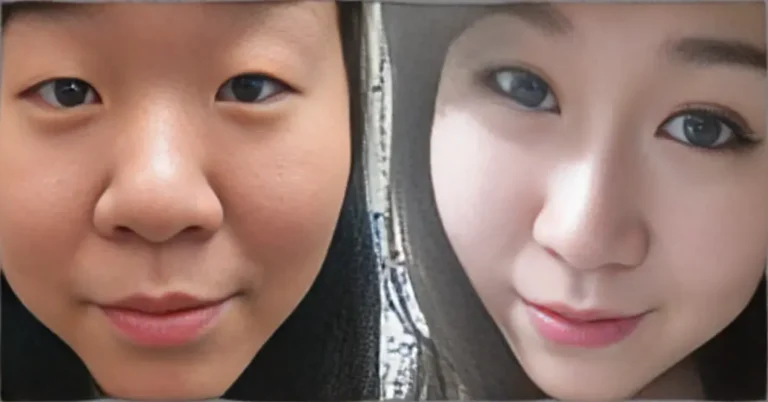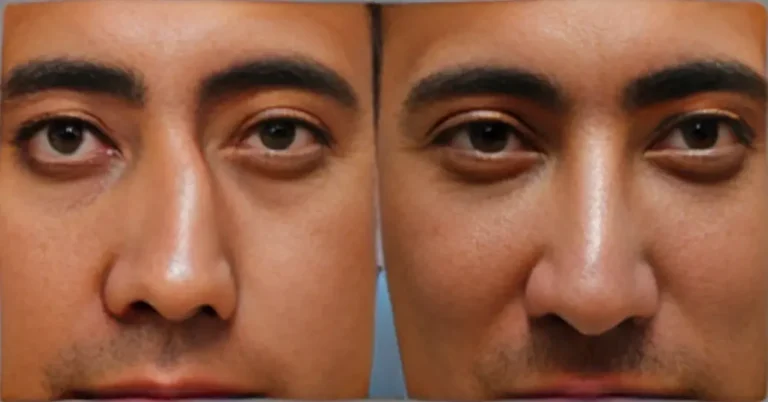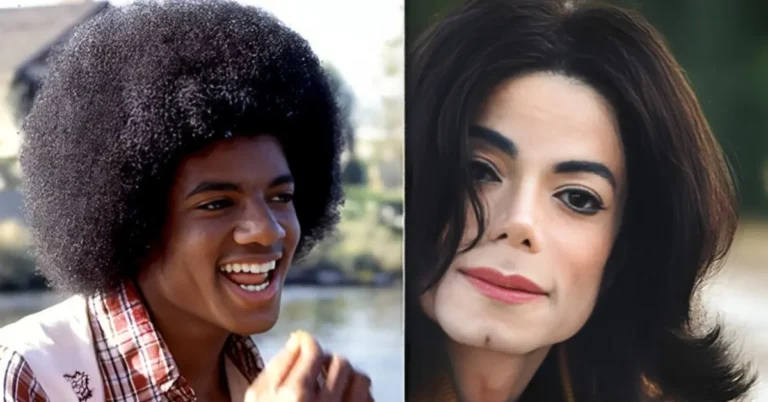What is Rhinophyma about the nose?
Rhinophyma: Causes, pictures, and treatment
Rhinophyma is a skin disorder that forces the nose to widen and become red, bumpy, and bulbous. It is considered to result from untreated, severe rosacea, a chronic inciting skin condition that causes facial redness on the nose and cheeks. Dissident to popular belief, Rosacea is not caused by rich alcohol use. It occurs equally in people who drink no alcohol and those who drink heavily. If left untreated, Rosacea can lead to permanent disfigurement. A large bulbous nasal tip can also cause nasal obstruction, making it difficult to breathe.
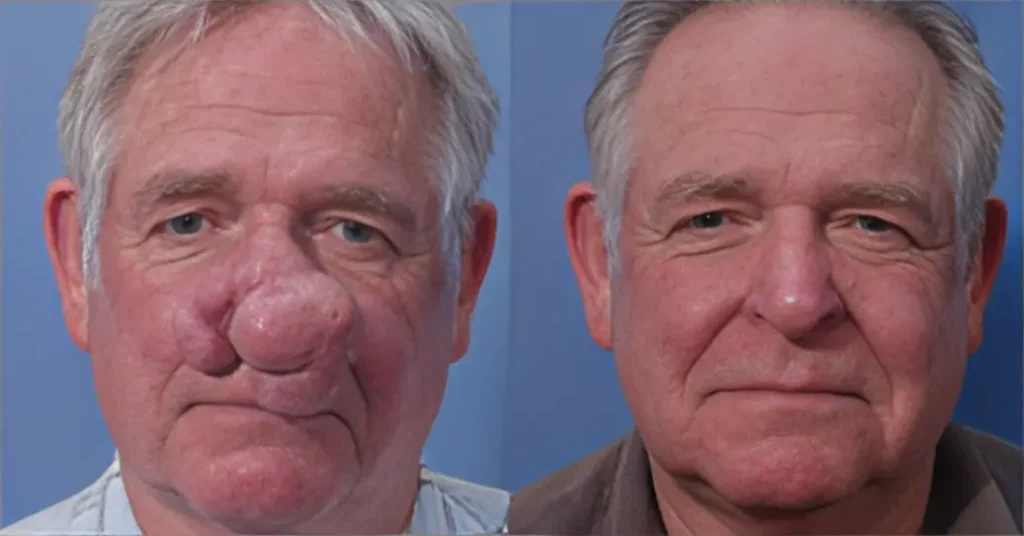
Rosacea is a common skin condition that concerns more than 16 million Americans. It causes irregular redness or flushing of the face, particularly in the cheeks and nasal areas. Small, red bumps loaded with pus, called pustules, may also appear on the face. If you have any of the signs of rosacea, it is essential to see a dermatologist for diagnosis and cure. Early treatment can help to prevent the development of rhinophyma and other complications.
Managing Rosacea and Rhinophyma
Here are some tips:
- Avoid triggers that can worsen rosacea symptoms, such as alcohol, spicy foods, and hot weather.
- Use a gentle cleanser and moisturizer on your face.
- Apply sunblock lotion cream and sunscreen with an SPF of 30 or more to your face and neck every day.
- Take medications prescribed by your dermatologist.
If you have , your surgen may recommend surgery to decrease the size of your nose and improve its appearance. Surgery is usually performed under general anesthesia.
Remember, you are not alone. Millions of people around the world are affected by rosacea. With appropriate therapy, you can manage your condition and live a full and active life.
Causes
The precise reasons behind remain elusive, but we do know certain elements that can up the odds of grappling with this unusual ailment. Here’s the lowdown on the risk factors:
- Age: Nasal deformity tends to rear its head between the ages of 50 and 70.
- Gender: Gents have a higher likelihood of falling prey to this condition compared to ladies.
- Skin Tone: Folks with fair complexions stand a higher chance of dealing with it.
- Ancestry: Those hailing from Irish, English, Scottish, Scandinavian, or Eastern European roots are at an elevated risk.
- Family Tree: If your kinfolk has a history of rosacea , the odds of it knocking on your door are higher.
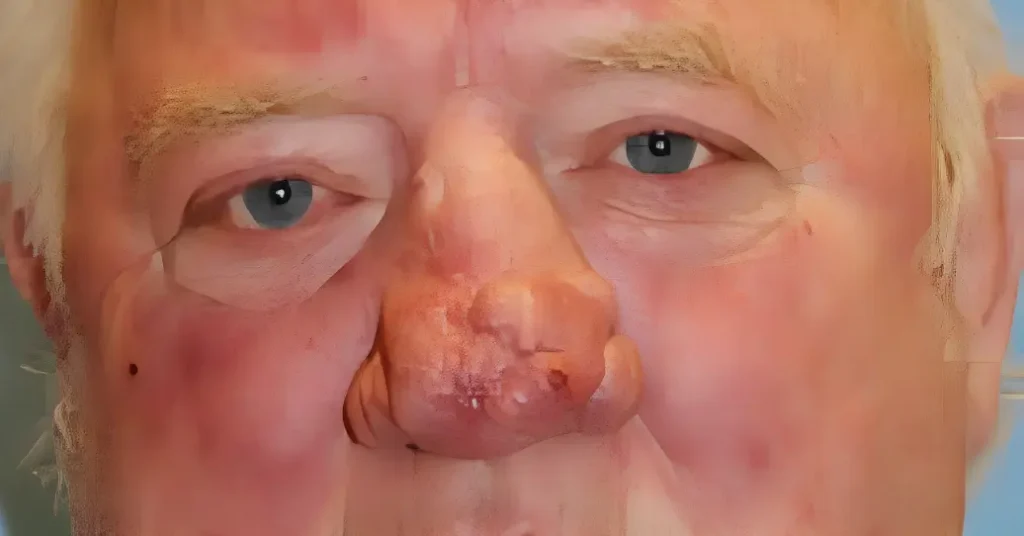
Symptoms
As rosacea keeps marching on, the symptoms tend to ramp up, especially when nasal deformity joins the party. Picture this: the connective tissue and oil glands in your nose decide to throw a little shindig, multiplying and causing these nose-related transformations:
- Slowly ballooning into a puffy, bulbous shape.
- Popping up more oil glands
- Skin pores throwing a growth spurt.
- Taking on a reddish hue
- Layers of skin beefing up.
- Sporting a waxy, rough, kind yellowish look. And here’s the kicker: if you let it off the hook and don’t treat it, these symptoms turn up the volume, sometimes playing peekaboo in cycles.
Diagnosis
In the early rounds of dealing with rosacea, it can play tricks on you, masquerading as acne or some other skin trouble. But, once rosacea is unmasked, that’s when it often steps into the spotlight. This rocks a set of standout traits. Usually, your doctor can spot it without needing to run a bunch of tests. Just chatting about your health history and giving you a once-over can often seal the diagnosis deal. Sometimes, though, they might need a tiny piece of your skin (a biopsy) to be absolutely sure, especially if this pesky condition refuses to budge despite attempts to treat it.
Treatment
When it comes to tackling With it, surgery usually takes the lead to:
- Give that misshapen nose a makeover
- Trim away excess tissue growth
- Shrink those oversized blood vessels
- Amp up the looks and make breathing a breeze
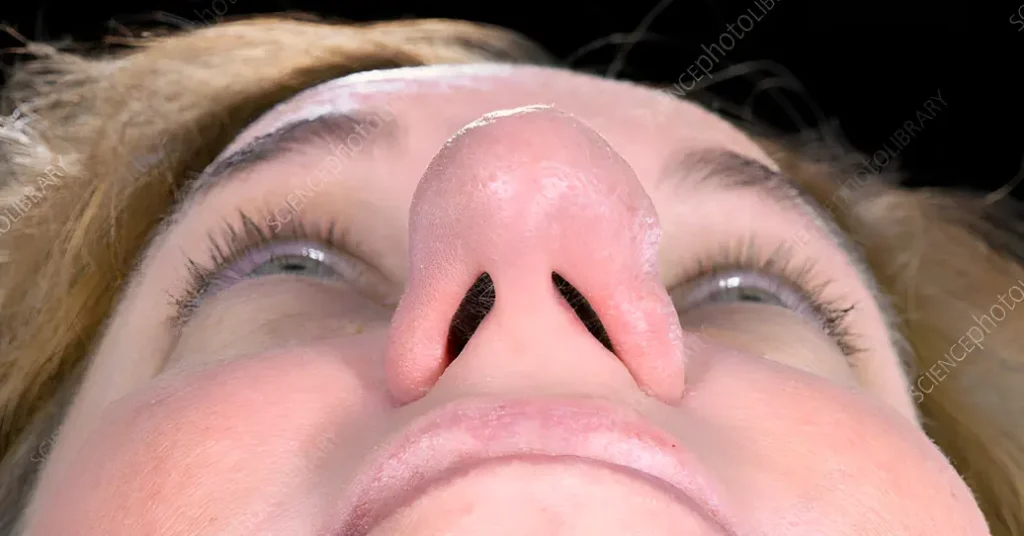
Our team of cosmetic facial wizards—think plastic surgeons and dermatologists—has a few tricks up their sleeves for :
- Laser enchantment to sculpt the nose just right
- Dermabrasion is a little skin buffing with a nifty rotating gadget. In the tougher cases, it’s about shaving down the tissue bulk with precise tools or surgical heat, then letting things mend with careful dressing changes. In the rare scenarios, we may need to do a skin grafting. For those big honker nasal deformity , we might opt for septorhinoplasty (a nose function revamp) as part of the fix. About six months after that, a dash of laser resurfacing could add the finishing touches.
Prevention For nasal deformity
Nope, there’s no magic attack to keep nasal deformity at bay. But here’s the knowledge: certain things can flow up the blood flow to your skin’s surface, giving rosacea a nudge. The exponents suggest avoiding these troublemakers to keep the flare-ups in check:
- Spicy and hot eats and drinks
- Booze
- Caffeine kicks
- Extreme temps, be it scorching or icy
- Basking in too much sunlight
- Letting stress and anxiety run the show
- Going all out in your workout grind
You can also Read: Nose Fracture- Symptoms & Causes

